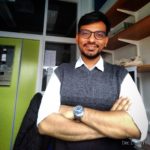Link to DOI – https://doi.org/10.1007/s12195-014-0366-3
Cellular and Molecular Bioengineering 8, no. 1 (March 2015): 3–13
Collective cell migration (CCM) can be described as a large scale coordinated movement of cells that are in close proximity with each other. It is a phenomenon that is observed not only in physiological processes such as that found in embryogenesis and wound healing but also in pathophysiological processes such as cancer metastasis. Some of the factors influencing this concerted process include cell–cell adhesion, cell–substrate interaction and mechanical cues such as geometrical constraints among others. Here, we review recent research work done to investigate CCM of adherent cells. We highlight the classical example of an in vitro cell monolayer to illustrate our current understanding of the different mechanobiological mechanisms involved as these cells respond to the mechanical cues present in their environment. It is hoped that such understanding may potentially lead to better therapeutic strategies for diseases such as cancer and for tissue engineering and repair.

